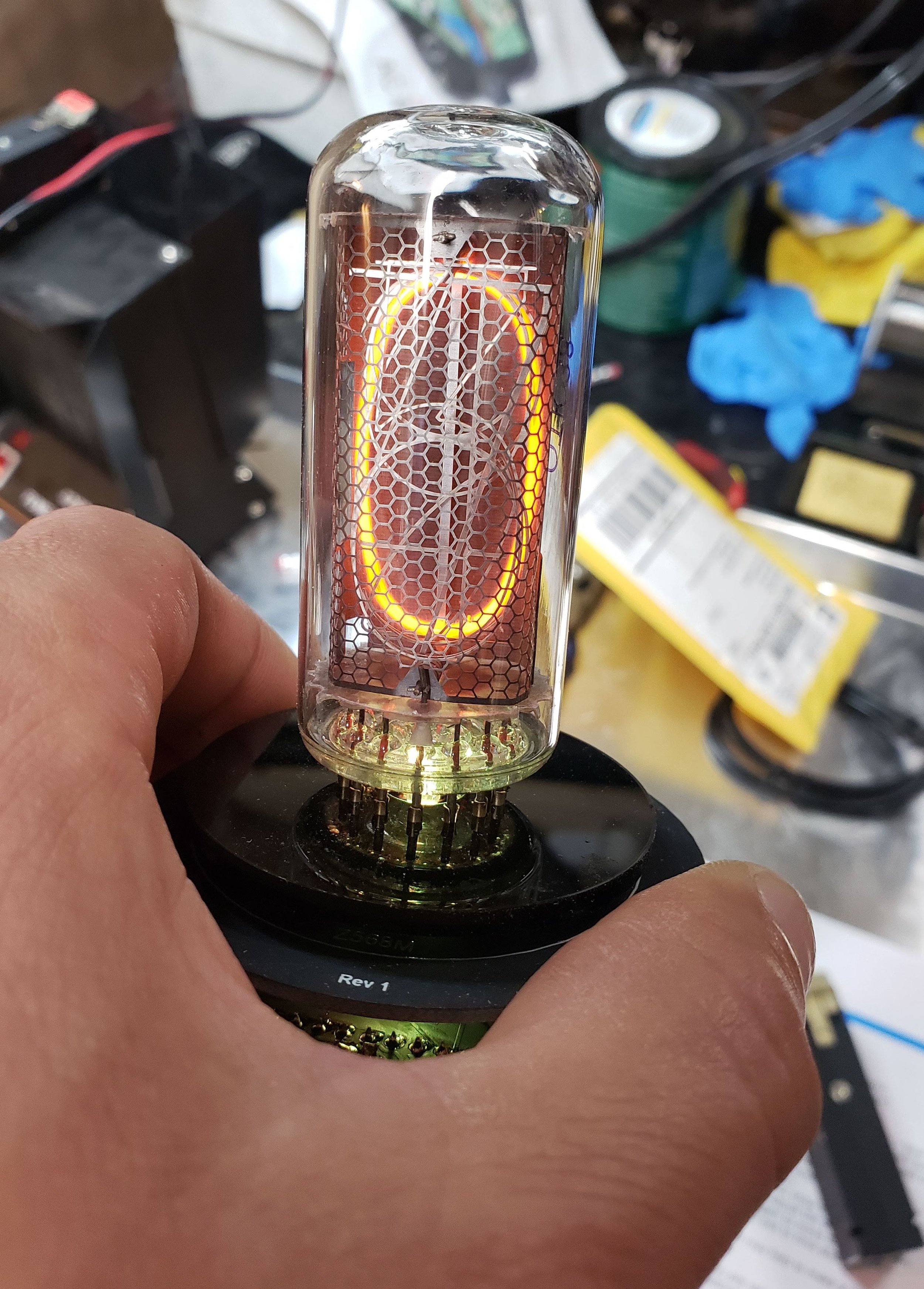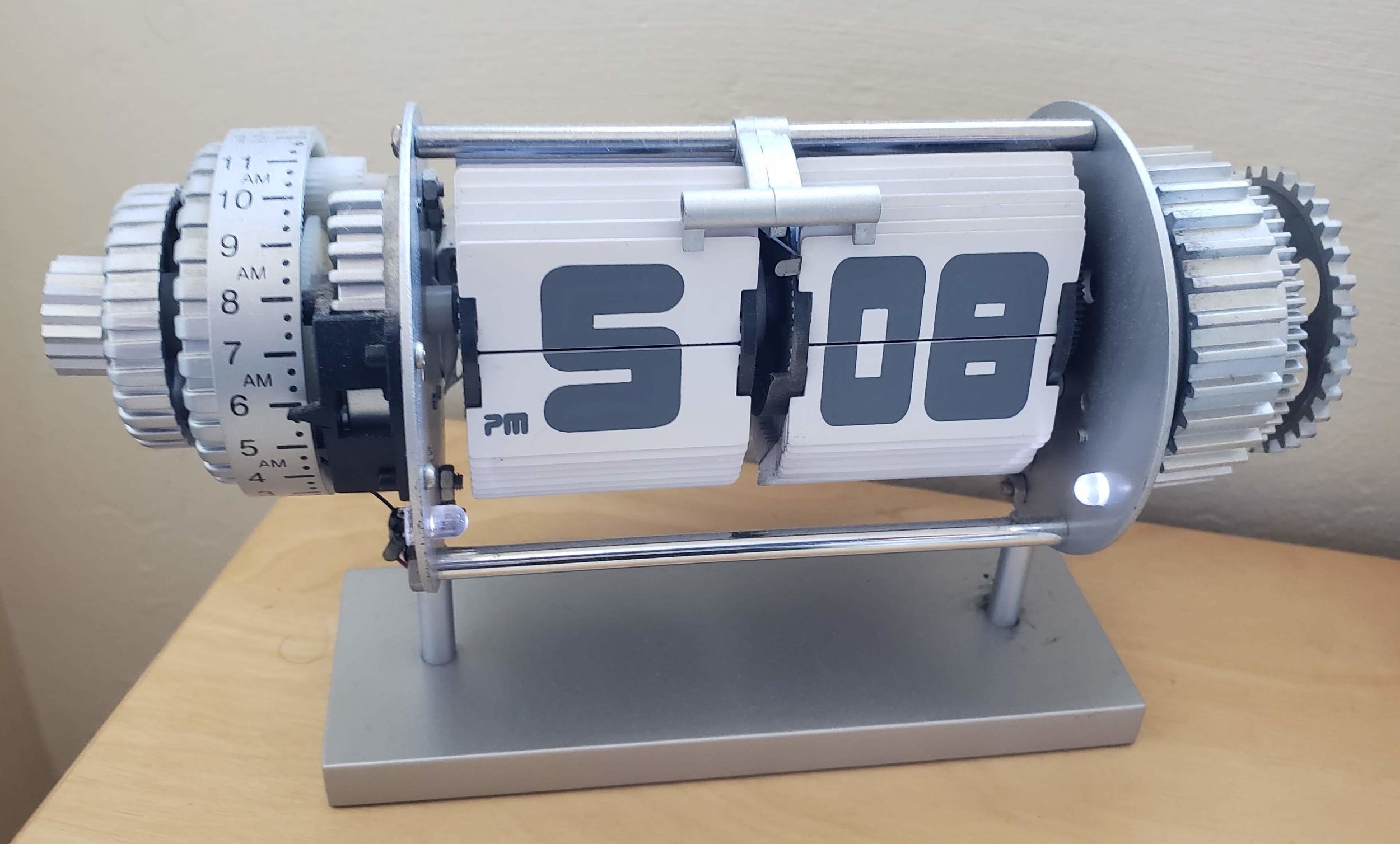I’ve always had a soft spot for the amazing electromechanical creations of the pre-digital age, awed by the creativity of engineers in solving real-world problems without the aid of semiconductors, Google, or a 3D printer.
I am particularly enamored with display technologies of the past. Sure, there were CRTs and incandescent indicator lights - both technologies of the late 19th century. But CRTs are bulky, and did not scale well - they couldn’t scale up in physical size to be the departure board for a train station, nor down in complexity when all that’s needed is a numerical display. And incandescents similarly had limitations in what they could display, of course.
Enter a few really cool display technologies: the Cold Cathode Display; the One Plane Readout; the Flip Dot; and the Split Pane. Though these have some arcane names, you’ve probably come across most of them at some point in your journeys, even if they’ve largely fallen out of favor in comparison to the comparatively inexpensive and infinitely more flexible large plasma / LCD displays now available.
Cold Cathode Display
These vacuum tubes, more commonly known as Nixie tubes, were invented in the 1950s and manufactured as late as the 1990s. There are still a few artisanal makers of beautiful and large - but very expensive - tubes, but the vast majority are available as “new old stock” (often abbreviated NOS) on eBay or other electronic swap meets. This means that though they’ve been made years ago (and so no longer have any manufacturer warranty or support), they’ve never been used.
Though they look like vacuum tubes, they are closer in operation to a neon sign than a traditional vacuum tube, as they do not depend on a heated cathode for operation. Rather, a common anode mesh and wire form cathodes bent into numbers - or in the case of a few speciality tubes, symbols. These wireforms are stacked one in front of the other, so careful observation as the numbers change reveal them moving forward or backward in within the glass envelope of the tube.
Nixie tubes are available in a surprising range of form factors. The key differentiators:
Larger IN-18 tube in single-number clock circuit board.
Head-on or side view: Is the digit visible by looking at the side of the tube, or at the top of the tube.
Size: Ranging anywhere from the tiny 8mm tall digit in the “IN-17” form factor to the 40mm tall “IN-18”.
Leads or pins: Are they soldered directly into a circuit board, or do they fit into a socket.
Numbers: Most have 0..9; a few also include a decimal point; a very small number are actually engineering units, like ohm, etc.; in a few, the 5 digit is actually just an upside down 2, presumably as a very modest manufacturing simplification
You can see two different form factors of these in my clocks, the smaller IN-8 in my Pan Pacific Nixie clock, and the larger IN-18 in my soon-to-be-released single number clock at right. But there were many more form factors made - and given that they were manufactured in volume in Russia and Eastern Europe though the 1980s, that’s where most of the NOS is shipped from.
They are quite durable, often lasting upwards of 200,000 hours for the latest manufactured, when driven within electrical tolerances. Unlike lightbulbs, the filaments do not break, but they do have a few more unique failure modes, some of which are caused by electrical equipment driving them outside of their rated tolerances. However, they are a lot more difficult to drive than an LED or a light bulb due to the high voltage (typically 170v) required.
One Plane Readout
Also known as Single Plane Displays or Projection Displays, the “one plane” name contrasts them directly with the Nixie tube that predated this display technology since the digits - or whatever is being projected - is all visible on a single plane at the front of the device, rather than ten wireforms at different depths from the viewer.
Projection displays operate by casting light from rear-mounted lamps through an array of masked lenses which then pass through a second set of focusing lenses, ultimately illuminating a front-facing translucent screen. Each lamp represents a separate digit or other character. Basically, it functions like a miniature slide projector, only the “slides” are typically numbers, each with its own separate lamp for electrical control.
Projection displays of this type were bulky, complex and expensive compared to the dominant Nixie tube. Some later versions addressed the size, but the complexity (and thus cost) - and relatively poor viewability - in comparison to the Nixie tube meant that these never gained dominance.
However, for the modern hobbyist, these displays have a few advantages over the Nixie tube.
As the underlying technology is a light bulb, they’re much easier to drive than the high voltages required for Nixie tubes.
The bulbs can be swapped out for differently colored lights (or LEDs).
As the display is actually a projection through a mask, all sorts of application-specific masks can be comparatively easily applied. The first batch I purchased, for instance, was used in some sort of printer, with messages like “Ready” and “Low Toner” displayed on the screen.
Building on the previous advantage - and though the original use cases probably never used this approach - multiple lights can be energized simultaneously to create a crude 3x3 pixel display or other unique animation, providing many more design opportunities.
The original mask that came with my One Plane readout
First custom-mask attempt
After a few more printing tweaks, the text is now at least legible
However, there are still a few of downsides: they are necessarily large with the embedded optics. But perhaps most important for those looking to use them today, since they never gained dominance, they are much more rare than Nixie tubes, and thus, their higher cost has continued on to today. What you may find online tends less to be new old stock, and more salvaged stock from decommissioned hardware.
I’ve picked up a few to be used in a bespoke Shakespearean Insult Generator - this will likely be just a one-of-a-kind, due to how difficult these displays are to source and the custom circuitry involved, but I’ll be sure to highlight it on my Instagram and here when available, so if this is something you might want, be sure to subscribe so you don’t miss out!
Split Flap Display
Though the name probably doesn’t mean much to you, you have probably seen this style of display at an old train stations. The San Francisco Ferry building has one. And they are still quite common in clocks - in fact, my brother gave me one as a gift a few years ago.
Large split flap displays make lots of satisfying clicking noises as they are changing messages; I had an old 1960s-era electromechanical pinball machine I enjoyed as a child in Rochester that made similar noises as it reset so perhaps the memories the sound conjures up is part of the appeal of these displays for me.
San Francisco ferry building departure board
My very own split-flap alarm clock
Split flap displays have a few advantages: they are very high visibility, and though they use power to set the message, once set, the message does not take any power to maintain. However, as mechanical systems, they are prone to breakdowns, and they are next to impossible to procure for a hobbyist since they were only deployed in large commercial settings, rather than in consumer or small industrial or engineering equipment.
The few listings you might see on eBay are either for clocks, or for posters picturing this style of display. Two companies, however, are making new displays for commercial use: Oat Foundry in Philadelphia, and Vestaboard in San Francisco. For a rough ballpark of pricing, dividing Vestaboard’s retail pricing by the board size, each 62-character segment costs about $20. Or you can try your hand at building your own following this Adafruit tutorial.
Though I’m tempted to pick up a Vestaboard for myself - I’ll figure out what to do with it later! - this, unfortunately, is not something that will be making it into a Branching Out Wood product in the near term.
Flip Dot Display
The Flip Dot Display is a grid of dots, where each dot is a small metal disc that can be flipped via an electromagnet to one of two differently-colored sides - typically black and white, or black and yellow. These are most commonly seen “in the wild” as a bus route message board.
These have some of the same advantages of split flap displays: high visibility, and no power consumption once they have been set. They are much simpler in construction than split flap displays since each pixel is either on or off (rather than having to rotate through the complete character set).
This also means they are more responsive and can potentially even display real-time graphics, such as you can see in this promotional video from New York-based Breakfast, advertising near 30fps. (Breakfast also advertises that their installations start at about $30,000).
For something a bit more affordable, Poland-based Alfa-Zeta has a number of smaller panels for sale, starting at around 20 EUR for a 1x7 display (i.e.: 7 pixels), to 420 EUR for a 14x28 display. Though about 1 EUR per pixel, a wall-sized display like you see in this video will probably run you north of $30,000 with them too, but at least they have something more entry level for the hobbyist.
Alfa-Zeta also manufactures a 7-segment flip dot style display - though considerably more expensive than a sub-$1 LED version at 9EUR (with volume discounts), they inherit those same flip dot (and split flap) advantages of high visibility and no ongoing power.
Given the lower price of the smaller modules here, though I do not yet have anything planned, I wouldn’t rule out a future Steampunk product that incorporates these in some way. Have some unique addition you’d like to consider for your home with these?
Other Technologies
Magic Eye
Numitron
Lightguide
There are a lot of other nifty niche display technologies as well:
The Magic Eye vacuum tube had a rather narrow application of displaying signal strength, and in particular, the strength of the radio signal for tuners
The Numitron is in incandescent filament-based “7 segment” display, the precursor to the much more compact, power efficient, and durable LED version of the same, though it seems a few are still manufactured for the ultra-conservative avionics industry
A Lightguide display contains multiple layers of acrylic or clear plastic panels, each engraved with the character, number, or message. Bulbs are placed along the edge of each layer, optically separated from other layers, so that each layer can be independently illuminated. The light reflects off the internal surfaces of the plastic, showing as a thin line of light at the engraving. Though these were made largely obsolete by LEDs, you still find them in a few places like etched emergency exit signs, or as the foundation of this maker’s new business.
And two super-cool one-off / concept displays:
Pixel Track prototype
Thread Display multi-spool swappable module
Pixel Track, a prototyped (but never manufactured) concept developed in 2014 combining a flip dot display track with a “train” that moves along embedded rails to flip the dots, allowing for an infinitely expandable - but presumably not infinitely expensive - message board. This would be perfect for a slowly-changing message, perhaps something updated daily or hourly. But alas, it never came to fruition.
Thread Display, an 6400 pixel (80x80) color display where each pixel looks like a spool of thread, custom built by Breakfast for Forever 21.
Rynx (2022 Update)
One brand new - but ultra-retro - addition to this growing list of steampunk electromechanical displays, a ring-based dot-matrix like rotating display! Developed by Rynx, a young German company about an hour outside Frankfurt led by Holger Driehaus, this display technology literally flips an old-fashioned mechanical combination lock on it’s side!
Conceptually simple - but with a plethora of hidden math and font design / graphic complexities - the basic idea is to print a pixelated pattern on the edge of the rings of a many-layered combination lock. With enough rings in that combination lock, by clever arrangement of that pattern, and by precise rotations with just one motor at the end of the stack (or a few motors placed throughout to speed up the message updating), you have a low resolution - but very retro and attractive - dot-matrix display.
My own independent iteration of a single ring inside Rynx, showing some of the hidden complexity of a ring-based display system; read more about some of the design issues and process here.
Wrapping It Up
Do you have a favorite technology that you’ve seen incorporated - or would like to incorporate - in a Steampunk project? i’d love to learn about other unique display technologies!













